Using the package circlize from R, My objective is to be able to group a chord diagram by year within each sector. New to the package, I started from the beginning by following examples in the tutorial. According to the vignette, grouping is possible (even using data.frames) by passing a group flag to the chordDiagram() command. This is stated in Chapter 15.6 Multiple-group Chord diagram. Following the vignette, i was able to produce a chord diagram but I am stuck on how to group to get my desired result. I have put together an example of a visual of what I would like the chord diagram to look like here:
As you can see, I aim to have each sector (OOP, UVA, WSE, FIN, MAT, OIC) grouped by the year (which is a column in the input data.frame. I can get the chord diagram, but without the years added.
A reproducible example
Creating a data.frame
Types <- data.frame(Types = c("OOP", "UVA", "MAT", "OIC", "FIN", "WSE"))
Type_Cols <- c(OOP = "#548235", UVA = "#660066", MAT = "#4472C4", OIC = "#002060", FIN = "#843C0C", WSE = "#C55A11")
stack.df <- data.frame(Year = c(rep(2019, 1), rep(2020, 4), rep(2021, 7), rep(2022, 11), rep(2023, 11)),
Invoice = c(paste0("2019.", "10", ".INV"),
paste0("2020.", seq(from = 20, to = 23, by = 1), ".INV"),
paste0("2021.", seq(from = 30, to = 36, by = 1), ".INV"),
paste0("2022.", seq(from = 40, to = 50, by = 1), ".INV"),
paste0("2023.", seq(from = 50, to = 60, by = 1), ".INV")))
stack.df <- cbind(stack.df, Org_1 = Types[sample(nrow(Types), nrow(stack.df), replace = TRUE), ], Org_2 = Types[sample(nrow(Types), nrow(stack.df), replace = TRUE), ])
Adding lty & colors for links
stack.df$lty <- sample(x = rep(c(1,2), times = nrow(stack.df)), size = nrow(stack.df), replace = TRUE)
stack.df$Link_cols <- stack.df$Year
stack.df$Link_cols <- ifelse(stack.df$Link_cols == 2019, "#D9D9D9",
ifelse(stack.df$Link_cols == 2020, "#B296B6",
ifelse(stack.df$Link_cols == 2021, "#FFD966",
ifelse(stack.df$Link_cols == 2022, "#D5469E",
ifelse(stack.df$Link_cols == 2023, "#B4C2A7", stack.df$Link_cols)))))
Re-arranging the stack.df
stack.df <- stack.df[, c(3,4, 2, 1, 5, 6)]
Graph the Chord Diagram
library(circlize)
chordDiagramFromDataFrame(stack.df[, c(1:2)], order = sort(union(stack.df$Org_1, stack.df$Org_2)),
grid.col = Type_Cols, link.lty = stack.df$lty, directional = 1, direction.type = "arrows",
link.arr.col = c("black", rep("white", nrow(stack.df) - 1)))
This gives the following chord diagram:

To produce the group parameter, the names in group should cover all sector names. This is where I am stuck, the vignette gives an example using a matrix, but not a data.frame. I have attempted to work around this buy writing similar codes like this:
group <- structure(union(stack.df$Org_1, stack.df$Org_2), names = unique(stack.df$Year))
But an approach like this gets me nowhere. Any ideas to get me unstuck? Thank-you!



